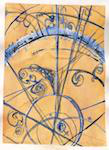Speaker
Peter Plößl
(University of Regensburg)
Description
Double parton distributions (DPDs) are not only an essential building block
needed in factorization theorems to calculate double parton scattering (DPS)
cross sections in perturbation theory, but they also contain very detailed
information about hadronic structure. However, as presently an extraction of
DPDs from experimental data or lattice calculations is not yet feasible, it is
common practice to resort to DPD models motivated by physical intuition. One
constraint any such model should fulfil are the DPD sum rules by Gaunt and
Stirling. We check numerically how restrictive the constraints imposed by these
sum rules are and show how they can be used to improve DPD models.
Authors
Peter Plößl
(University of Regensburg)
Markus Diehl
(DESY)
Andreas Schaefer
(Regensburg University)
Mr
Daniel Lang
